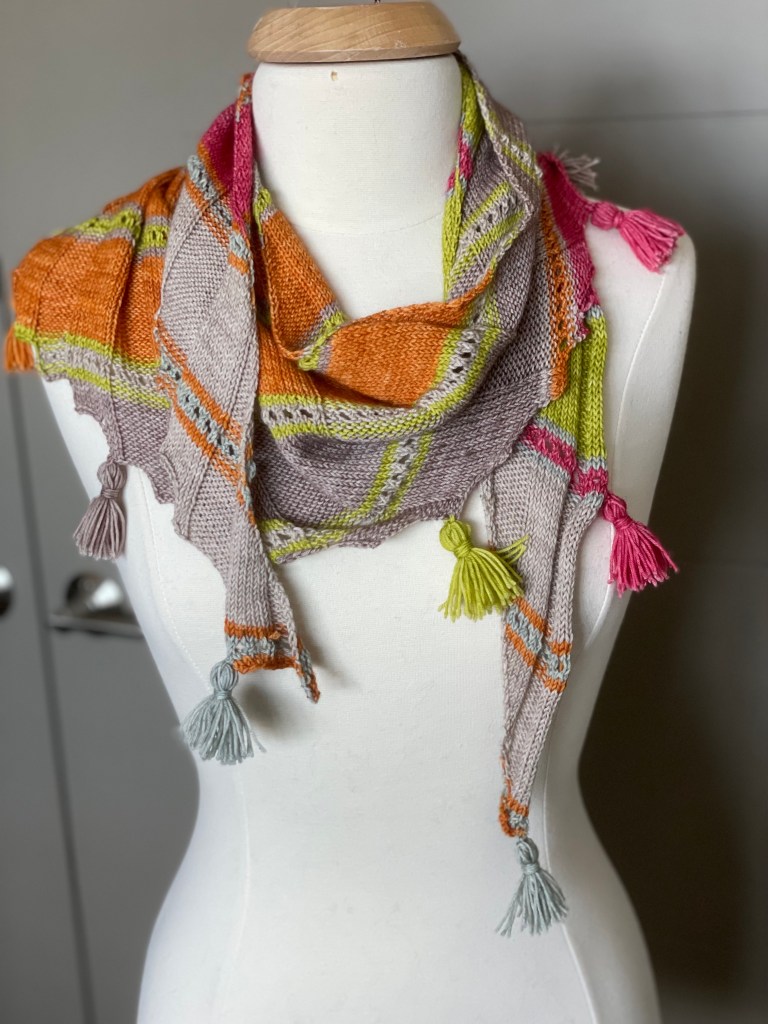
Purchase This Pattern:
https://www.ravelry.com/patterns/library/united-colors
NOTE: If you purchased this pattern before 6/16/2022, there is a BO6 missing from the beginning of Row 313. The pattern has now been updated through Ravelry.
Purchase this Yarn:
Overview: This small, asymmetric, crescent-shaped shawl is reversible due to the alternating sections of stockinette and reverse stockinette stitches. The overall construction consists of three distinct patterns: the shape, the texture, and the color.
First, the triangular shape of the shawl is constructed by increasing one stitch at the end of each right side (RS) row (from Point A to Point C on the schematic below). I used a YO increase between the last two stitches of every RS row for these increases. The top edge of the triangle (Point B to Point C) is constructed by binding off a small number of stitches (6 sts) at evenly spaced intervals (every 6th row). The right edge of the triangle (Point A to Point B) is worked straight (without shaping).
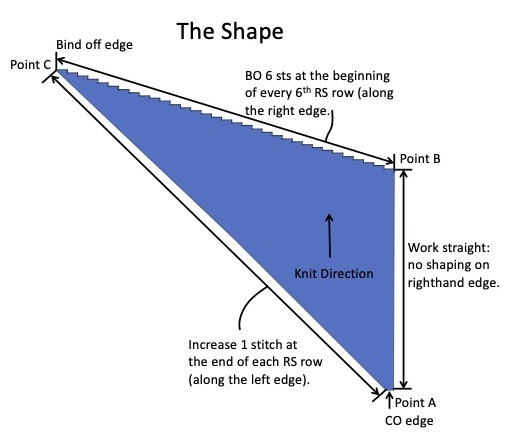


Second, the texture of the fabric is a large rib pattern. Each row from point A to point B begins with 5 stockinette stitches (K on RS, P on WS). As the increases occur, stitches are worked in the rib pattern, alternating sections of stockinette and reverse stockinette stitches. The sections of stockinette and reverse stockinette get larger and larger until they are each 15 stitches wide, and then they reduce back to 5 stitches.
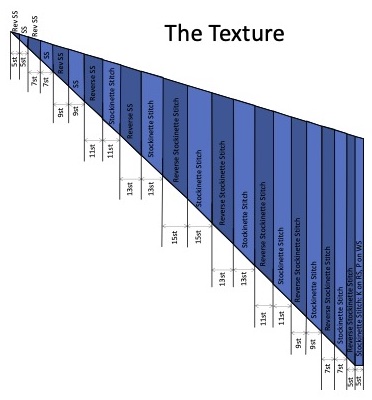
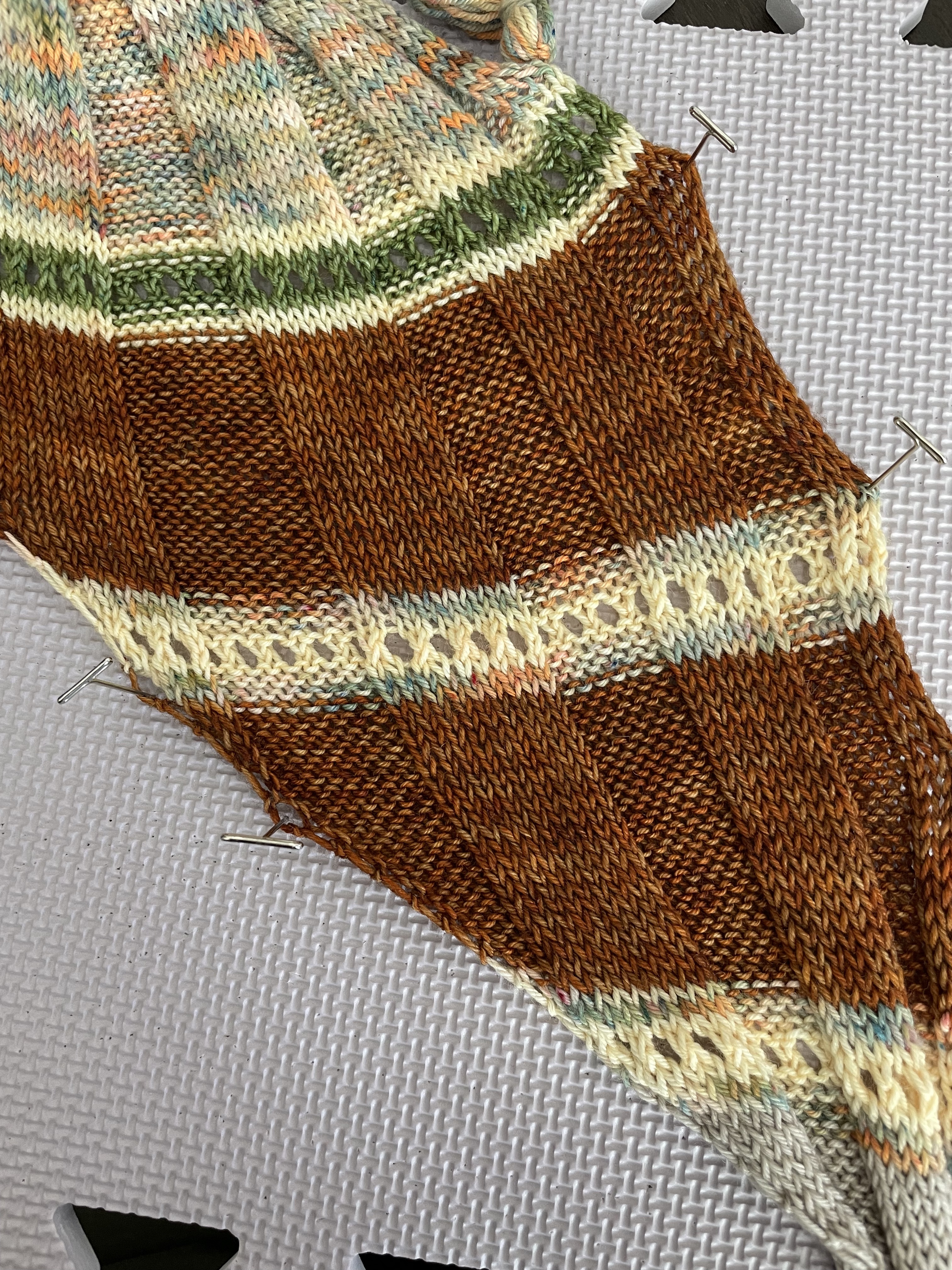
Finally, there is a striped color pattern: 2 rows of color 1, 4 rows of color 2 in simple lace pattern (YO, K2tog or YO, P2tog), 2 rows of color 1, 20 rows of color 3.
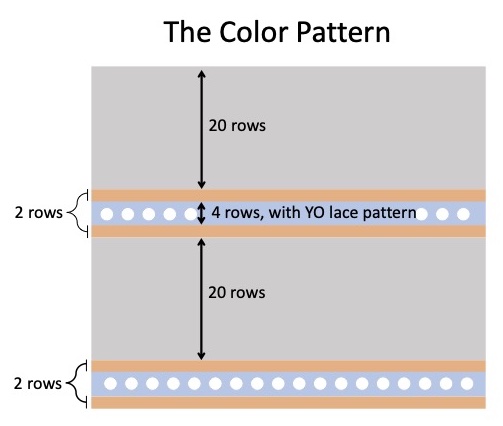

Blocking and Finishing
To block, I soaked the shawl in a no-rinse wash (Eucalan or Soak) for about 30 minutes. I like to soak for at least 30 minutes to ensure that all the fibers are wet and have expanded. The wet fibers are relaxed and allow any wonky stitches (too loose or too tight) to slide past each other. Blocked knitting always looks more even than unblocked knitting. Once thoroughly wet, I gently squeeze out as much excess water as I can, then wrap in a towel and apply pressure to squeeze out more water.
I pinned each of the bound off corners, down the straight edge, and along the increase edge. Alternatively, you could use blocking wires along the straight and curved edges. Blocking wires should eliminate the slight puckers generated by the pins. These typically disappear quickly after the pins are released, so I don’t worry about them.
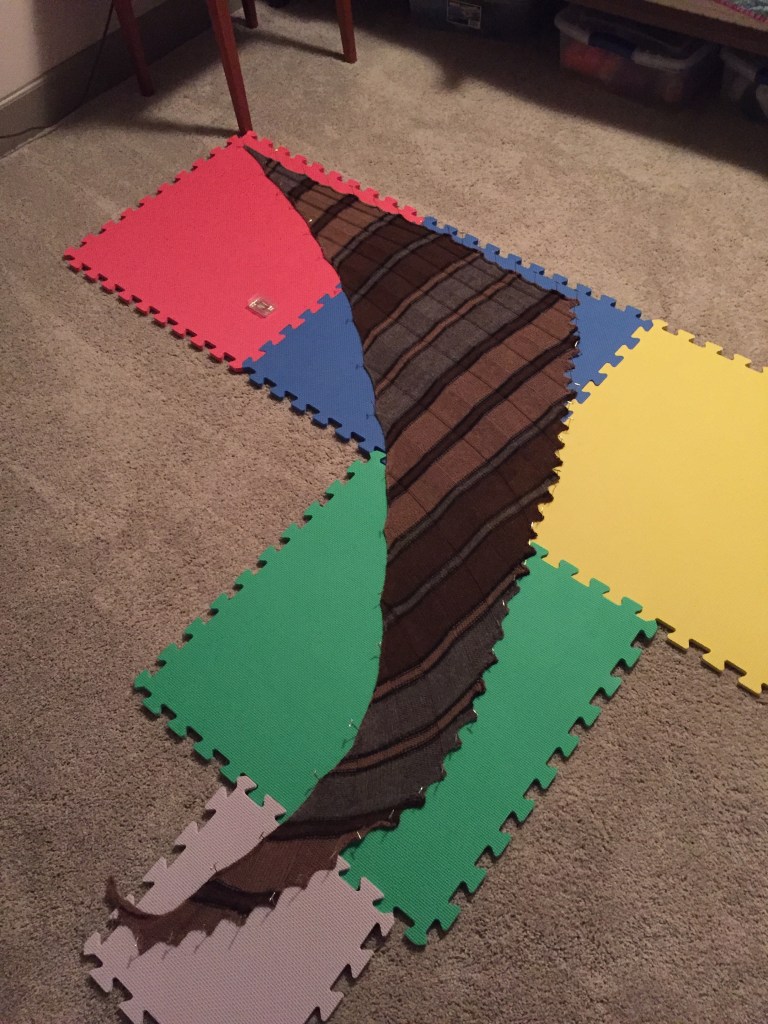
After the shawl has completely dried, it’s time to grab a glass of wine, put on your favorite show/podcast/audio book and weave in those ends. There are many ends! I tend to clip the yarn for every color change because I can’t seem to remember to carry it along the edge. And, once you begin the bind off edge, it’s more challenging to carry the yarn. So I embrace the weaving in ends by indulging in another activity that enjoy!
The weaved ends along the straight edge are generally hidden by the gentle curvature of the first 5 knitted stitches. I try to hide the woven ends as much as I can along the bound off edges.
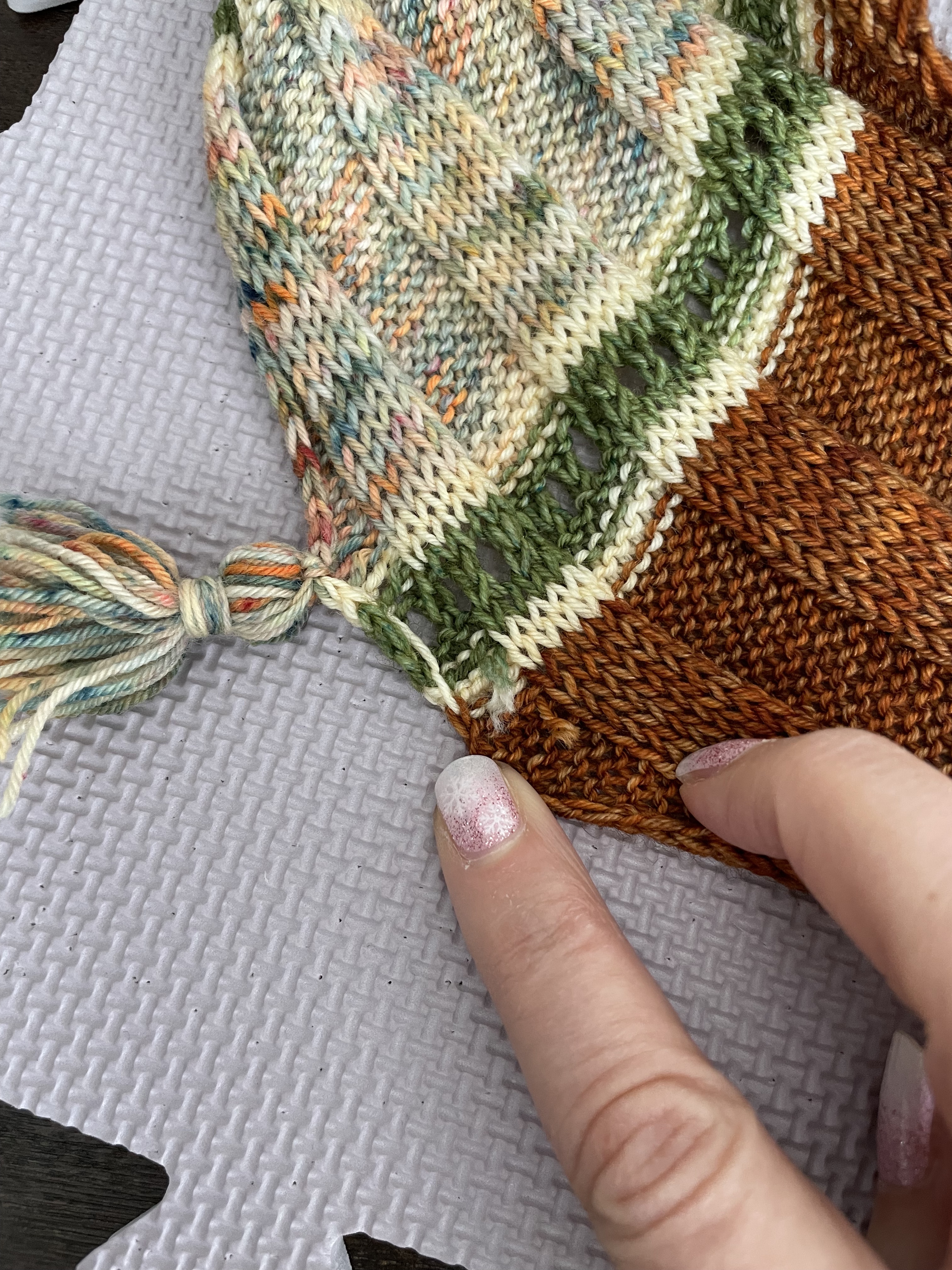

Last, I used the excess yarn to make the tassels. I have very little of one color left, so I used the other five colors to make the tassels. To make the tassels, I wrapped the yarn around a small box about 30 times. I secured the top with a knot, removed from the box, and tightly wrapped the strands together close to one end. Then I clipped and trimmed the ends and attached the tassels to the shawl.
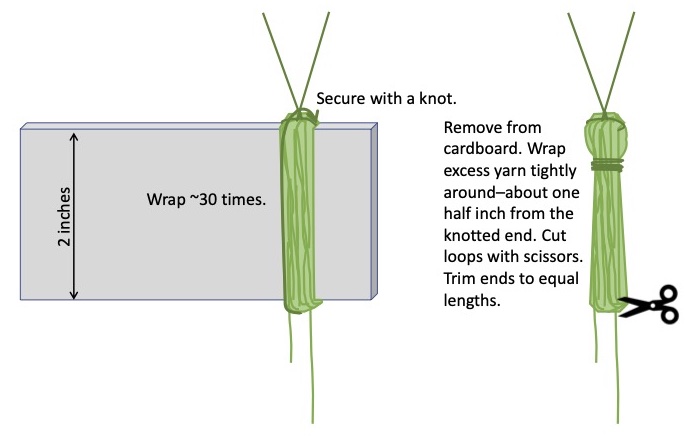

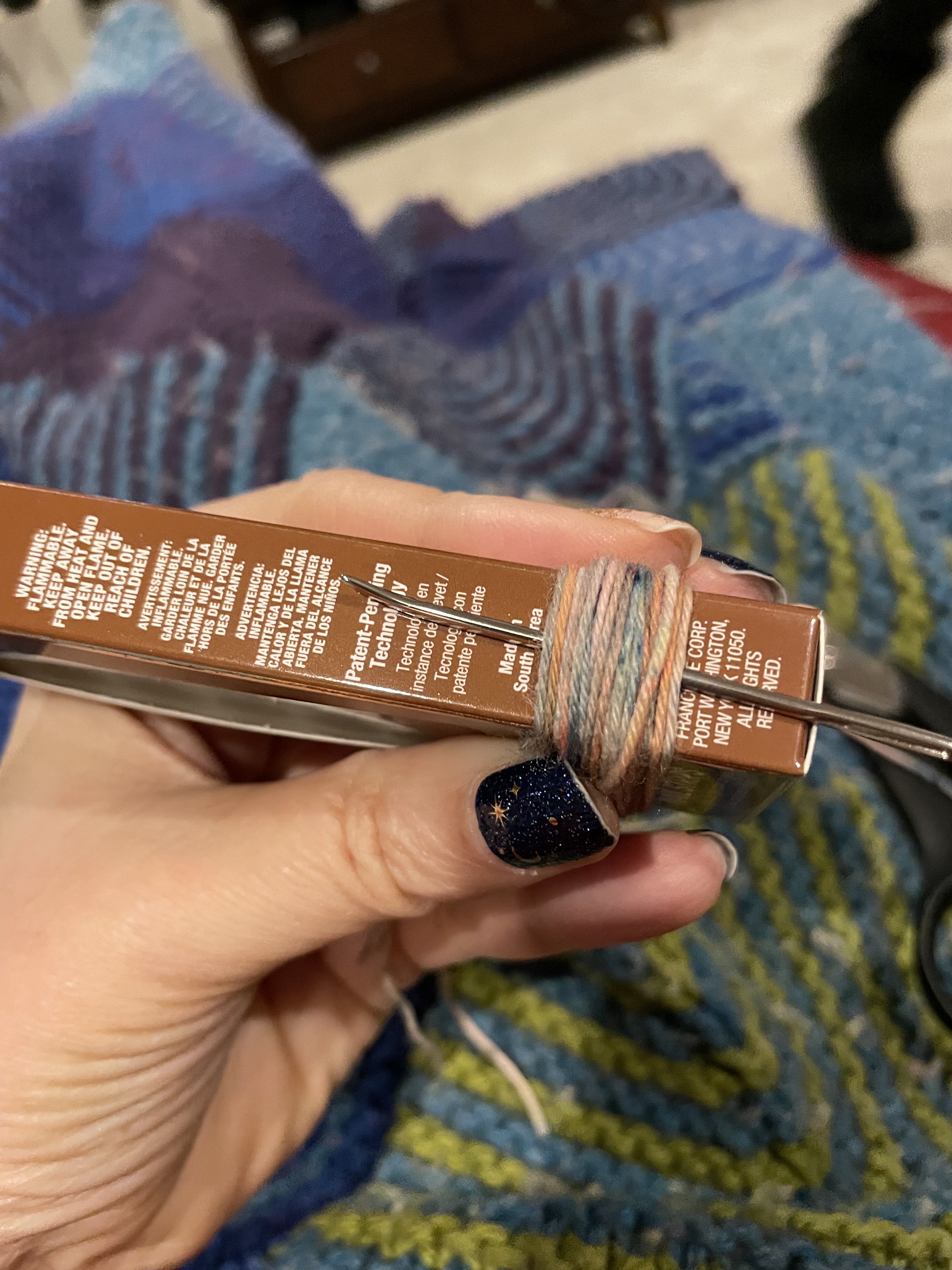
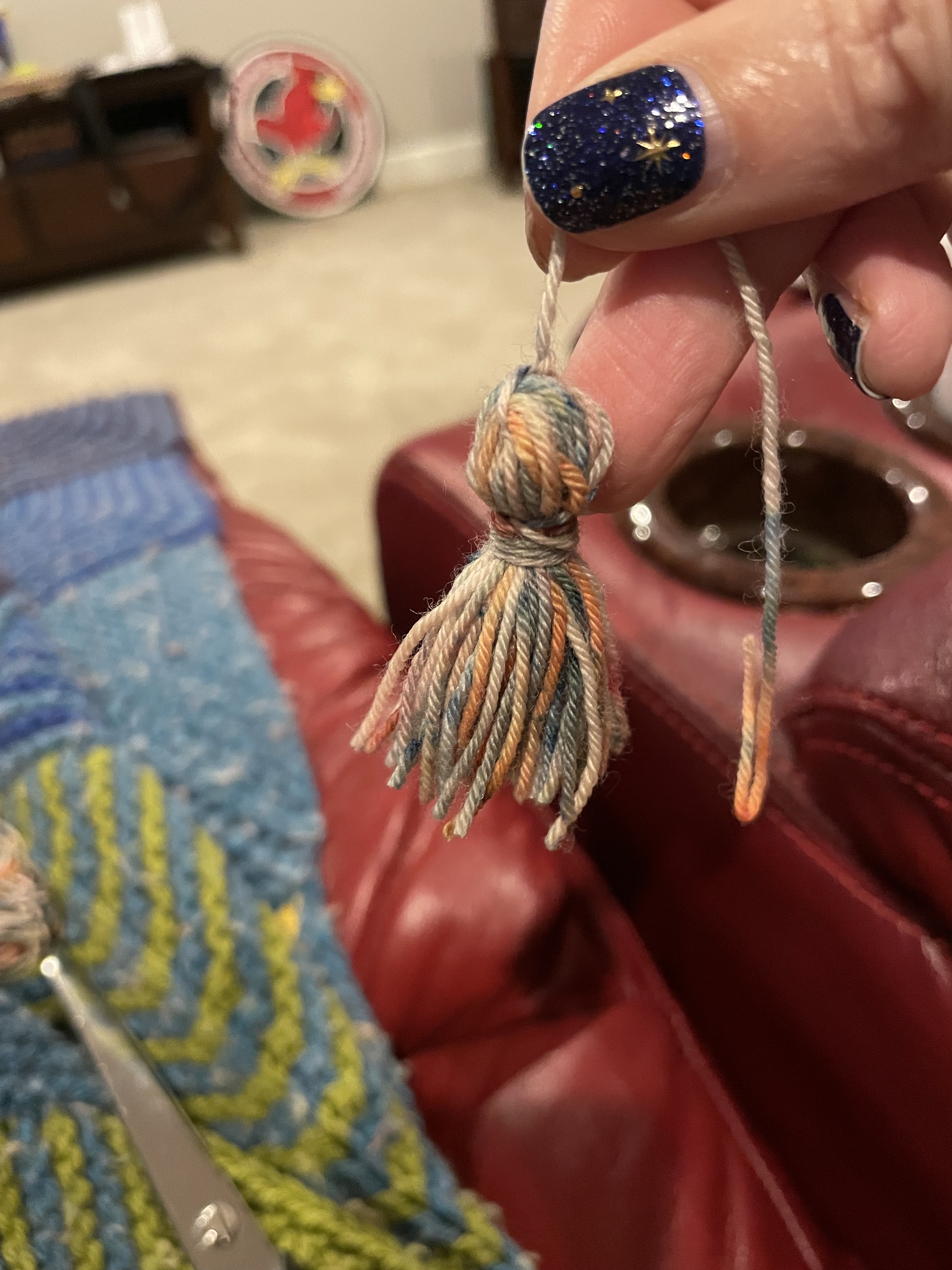
Suggested Tassel Placement


I’m making United Colors and have a question about binding off starting with Row 217. When I bind off 6 I only have 3 stitches left to purl instead of 4 called for. I have 112 stitches on my needles and my stitch count has come out right on all rows. I’m just confused about the BO. I’d appreciate any advice you could give me! I love the pattern! It’s been fun to work on. Thanks so much!
LikeLike
Hi Sandy,
Sorry it’s taken a while to respond. I’ve been away from my computer. You are correct. If you have K5, P5 and BO 6, there will be 6 sts bound off, 1 st on the right needle (which should be a P st) and 3 more sts to purl. I think I counted the last st worked as the BO in the count for P4.
Just continue to work the sts according the the established K/P pattern of the row below and it will look fantastic! I will make a note to change this in the pattern.
Thanks!
Mindy
LikeLike